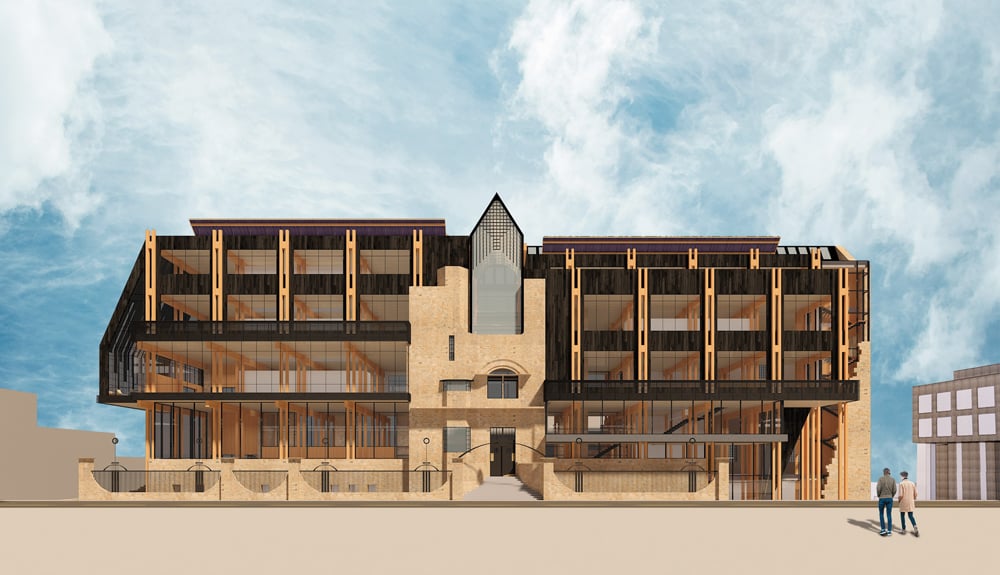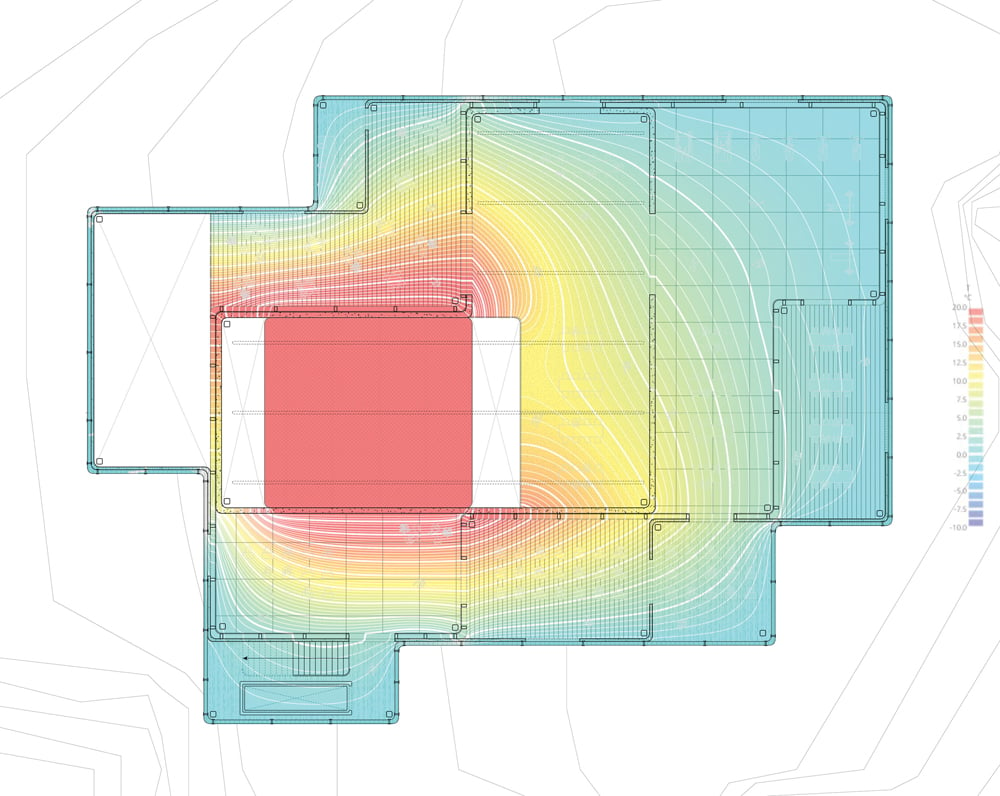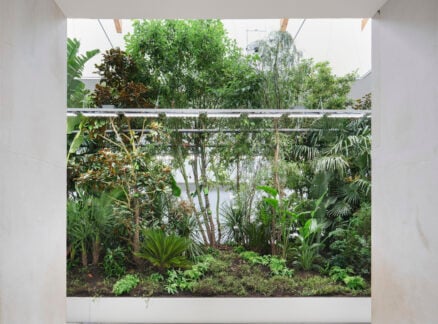
May 17, 2021
Future100: For Young Architects-in-Training, Green Building Strategies Affect Form and Function
Portfolios by students born after the LEED rating system was established reveal what the future of sustainable design will look like.

it extracts energy. Courtesy Carla De Haro
Architecture school is a time of possibility, the chance to push boundaries without concern for meddling clients or budget constraints. It’s when young designers, amid the pressures of harsh critiques, long studio hours, and heavy course commitments, persevere and test ideas to change the world. That’s precisely the mindset we need in this time of climate change—and the reason that these six students’ portfolios stand out.
They come from different universities around the nation, but share a collective interest in a variety of sustainable approaches. Perhaps the most common thread across their portfolios and projects is mass timber framing. There’s enough interest to enable a new generation of tall wood buildings and reduce the carbon-intensive manufacturing impact of steel and concrete. This group also seems to think of mass timber as an inherently modular building system, and accepts the act of building as an energy-generating machine. In their concepts, photovoltaic panels exist amid broader alternative power-generation strategies ranging from wind to geothermal systems.
Of course, it is telling that these scholars (now in their 20s) were born when the LEED rating system and other hallmarks of green building were already under way. Sustainability is so central to their ideas that the word is almost superfluous.
Many of the techniques and materials in these portfolios are fairly common in built projects, yet the students also use green design as functional inspiration for making bold architectural moves.
Cornell University undergrad Carla De Haro’s con.duc.tion proposal lands a new building atop the local campus bookstore like a kind of spaceship extracting waste energy and water from its host. The University of Idaho’s Nguyet Huynh makes the ruins of Charles Rennie Mackintosh’s iconic Glasgow School of Art the vessel for a regenerative sustainable design demonstration project with a biofuel generator and wall panels made from locally harvested cork. Then there’s James Jung’s design for a pavilion on the moon.
Sometimes, however, the best ideas are the simplest and most time-tested, quiet and free of ego. This is exemplified in a project by Northeastern University’s Kathryn Platt. Designed with no single program in mind, it focuses instead on flexibility and durability. After all, the most sustainable structure is the one you don’t have to build.

Visit metropolismag.com/future100 to see more groundbreaking student work.
CARLA DE HARO
Cornell University
Undergraduate Architecture
NOMINATOR: Henry Richardson, Academic Advisor, Core Design Studio Professor
In Carla De Haro’s portfolio, buildings don’t exist by themselves but instead respond boldly to their contexts. Her High Line Oasis project gives New York’s High Line users a view of the Hudson River by lifting and pulling apart a building, while an Ithaca concert hall displays a chameleonlike ability to transform its facade.
NGUYET HUYNH
University of Idaho
Graduate Architecture
NOMINATOR: Bruce Haglund, Distinguished Professor
Huynh’s portfolio begins with a page of beautifully crafted physical models, then features a wide spectrum of design scales. Besides an individual apartment, restaurant, and bank, there’s also a responsive housing project in Idaho.
KEUNHYUK “JAMES” JUNG
Savannah College of Art and Design
Graduate Architecture
NOMINATOR: Anthony Cissell, Chair of Architecture and Urban Design
Schools play an outsize role in Jung’s portfolio, be it a Copenhagen institution with a rotating bridge or a Duluth middle school with operable glass walls. Yet Jung is equally captivated with high-density neighborhood buildings, restored natural landscapes, and even futuristic transit including a hyperloop and passenger drones.
KATHRYN PLATT
Northeastern University
Graduate Architecture
NOMINATOR: David Fannon, Associate Professor
The designs in Platt’s portfolio demon-strate an interest in structure and building materials. Her signature project, designed with no single program in mind, is an exercise in flexibility and durability over time, combining steel and timber framing
LIUDMILA SERGEEVA
University of Southern California
Graduate Architecture
NOMINATOR: Selwyn Ting, Associate Director, Graduate Architecture Programs, and National Architectural Accrediting Board Coordinator
Design for public good underscores Sergeeva’s portfolio, including a communal coworking space that grows food for the neighborhood on-site, a reimagined parking garage with room to gather on top, and a K–12 youth center.
ALEKSANDRA ZATORSKA
New York Institute of Technology
Graduate Architecture
NOMINATOR: David Diamond, Director, Master of Architecture Program
Whether it’s an aquatic center or a moun-tain cabin, Zatorska displays a curious, creative mind. From hand-drawn studies to sophisticated virtual reality projects, numerous building designs display striking patterns through structure.
You may also enjoy “Future100: Students Investigate Sacred Space”
Would you like to comment on this article? Send your thoughts to: [email protected]
Register here for Metropolis’s Think Tank Thursdays and hear what leading firms across North America are thinking and working on today.
Recent Viewpoints
Viewpoints
Sustainability News Updates for Q2 2025





